by Texas Homesteader ~
Many people are increasingly keenly interested in protecting the pollinators and getting into beekeeping. On this site I share a whole beekeeping series. But in this article I’m sharing how to tell when it’s time to expand your beehive.
Texas Homesteader’s Beekeeping Series
If you’ve been following our Beekeeping Series, you’ll know we’ve already discussed several important things a beekeeper needs to know, including:
And much more! You can see a more complete list of topics at the end of this post or by clicking our Beekeeping Category.
But now you have your bees, you’ve kept up your periodical hive inspection and are wondering if you need to give your bees room to expand.
RancherMan & I are raising our own colonies of bees using the popular Langstroth hive.
For a whole year before we ever got our first bees we attended seminars & joined a local beekeepers association to surround ourselves with those that have already learned the ropes.
What Happens When A Beehive Gets Crowded?
One important thing we’ve learned is that if the bees fill too much of their available frames with brood and honey, they’ll often go looking for a place to expand by taking their queen & swarming away into the wild blue yonder!
As a beekeeper you want to avoid this since their swarming means you’re losing the bees you’ve purchased and nurtured all this time.
This is one important reason it’s vital to inspect the inside of your hives periodically. You’re checking the health & vitality of the hive, whether or not you see common honeybee pests and how many frames the bees have filled so far.
When Is It Time To Expand The Beehive?
When you observe that the bees have filled approximately 80% of their available frames you want to add another deep box with frames to give them room to expand.
This box is open on both the top & bottom so the bees will naturally migrate upward and start working on those available frames.
Not only does this step help keep your bees from swarming away, but it also builds your hive: More space + more frames = more bees & more HONEY!
To do a simple Walk-Away Split you’ll simply remove the top cover & telescoping lid on the top box, add this new deep box and frames and replace the covers to the top.
BOOM! You’ve just expanded your hive!
(Note: Although the walk-away split is by far the easiest, RancherMan & I typically do a Frame-Swap Split giving each split colony a number of frames of comb, brood and honey. Either way, up to you!)
During the last inspection RancherMan noticed that we approached the 80% full threshold so we made plans to expand the hives soon.
We waited until mid afternoon when the bees would be most active in their foraging and hopefully fewer bees would actually be present in the hives.
We’ve been warned time & time again to NEVER deal with the hives without at least a protective beekeeper’s veil to protect your eyes. So we suited up with our veils and gloves, long sleeved white shirts over a tucked in t-shirt, heavy denim jeans and boots. And out to the hives we went.
Inspecting Beehive Frames
RancherMan smoked the entrance of the hive first to distract the bees. Then he removed the telescoping cover and the inner lid.
Using his hive tool he loosened the first frame on the edge of the hive box and gently removed it for inspection. Bees typically work from the center of the hive outward so this gives us an idea of how full the frames were.
This last frame looked to be about 90% full on one side and they had just started working on the other side. Perfect!
Beehive Frames Filled With Brood
While we were inspecting the hive, we were taking notice of the contents of the frames as well. The bees will usually fill in their frames in a semi-circle, arching to the top of the frame and back down again.
The middle of the frames will typically be brood cells where the queen lays the eggs and the workers tend to the brood. These cells have already been capped and these new bees are well on their way to being born.
What Do Honey Cells Look Like On Beehive Frames
The top corners are where the bees will typically store their honey reserves. The capped honey is easy to tell from the capped brood as it looks different than the brood, as you can tell.
The honey cells are waxy, not papery like the brood cells are. This honey is stored to be used to feed the hive.
Looking For The Queen Bee
He also pulled a couple more frames and inspected them as well. He was hoping he could lay his eyes on the queen.
The picture below shows the difference between the queen bee and a worker bee.
You’ll notice the queen is more solidly colored and noticeably longer. She’s pretty easy to spot in the hive even with all the bees buzzing around!
Adding Boxes To Expand The Beehive
Now that the inspection of the hive has been done, it’s time to add a deep box to the hive. Today this deep box was loaded with 9 frames plus an internal feeder. The feeder has been filled with 1 part sugar, 1 part water.
We felt it was beneficial to add the feed, and 1×1 encourages them to draw out the comb.
So we grabbed the prepared boxes we brought to the hive with us and RancherMan smoked the hive again to distract the bees. He brushed away any that were on the top edges and carefully sat the expansion box atop the previous hive box.
Now he replaced the top and the roof of the hive. He repeated this process with the other hives, then he strapped the box tops back down and we left them to attend to their bee bzzzzness!
Keeping A Beehive Inspection Journal
Once we get back inside, I’ll get busy downloading a kabazillion pictures I’d taken and RancherMan updated his beekeeping journal. He wants to keep tabs on when he did things to the hives and what he observed during inspections and expansions:
- Added 2nd deep to box both hives w/feeders approximately 1/2 full. Both hives very active and larger than last inspection. Found queen in hive 4. No hive beetles found.
We’ll inspect them in a couple of weeks to see how they’re doing with their new diggs.
Below is a list of articles from our beekeeping series. Feel free to check them out!
~TxH~
BEEKEEPING SERIES:
- Preparing For the Hives
- Obtaining Your Bees
- Inspecting Your Hives
- Feeding Bees With A Frame-Feeder
- Knowing When To Expand The Hive
- Performing A Walk-Away Split
- Performing A Frame-Swap Split
- 5-Minute Beehive Stand
- Adding A Honey Super To Your Hive
- Catching A Bee Swarm (With Video)
- Requeening A Beehive – Things We Didn’t Know
- Make FOUR 5-Frame Nuc Boxes From 1 Sheet of Plywood!
- Varroa Mite Treatment For Your Apiary
- Preparing Your Hive For Honey Harvest
- Proper Honey Bottling Tips
- Purifying Your Beeswax
- MYO Beeswax Lip Balm
- Homemade Beeswax Jar Candles
- Beeswax Wraps – A Natural Solution To Plastic Wrap
…And MUCH More!
See All Our Beekeeping Posts
C’mon by & sit a spell! Come hang out at our Facebook Page . It’s like sitting in a front porch rocker with a glass of cold iced tea. There are lots of good folks sharing! And you can also follow along on Pinterest, Twitter or Instagram
If you’d like to receive an email when a new blog post goes live,
subscribe to our Blog!

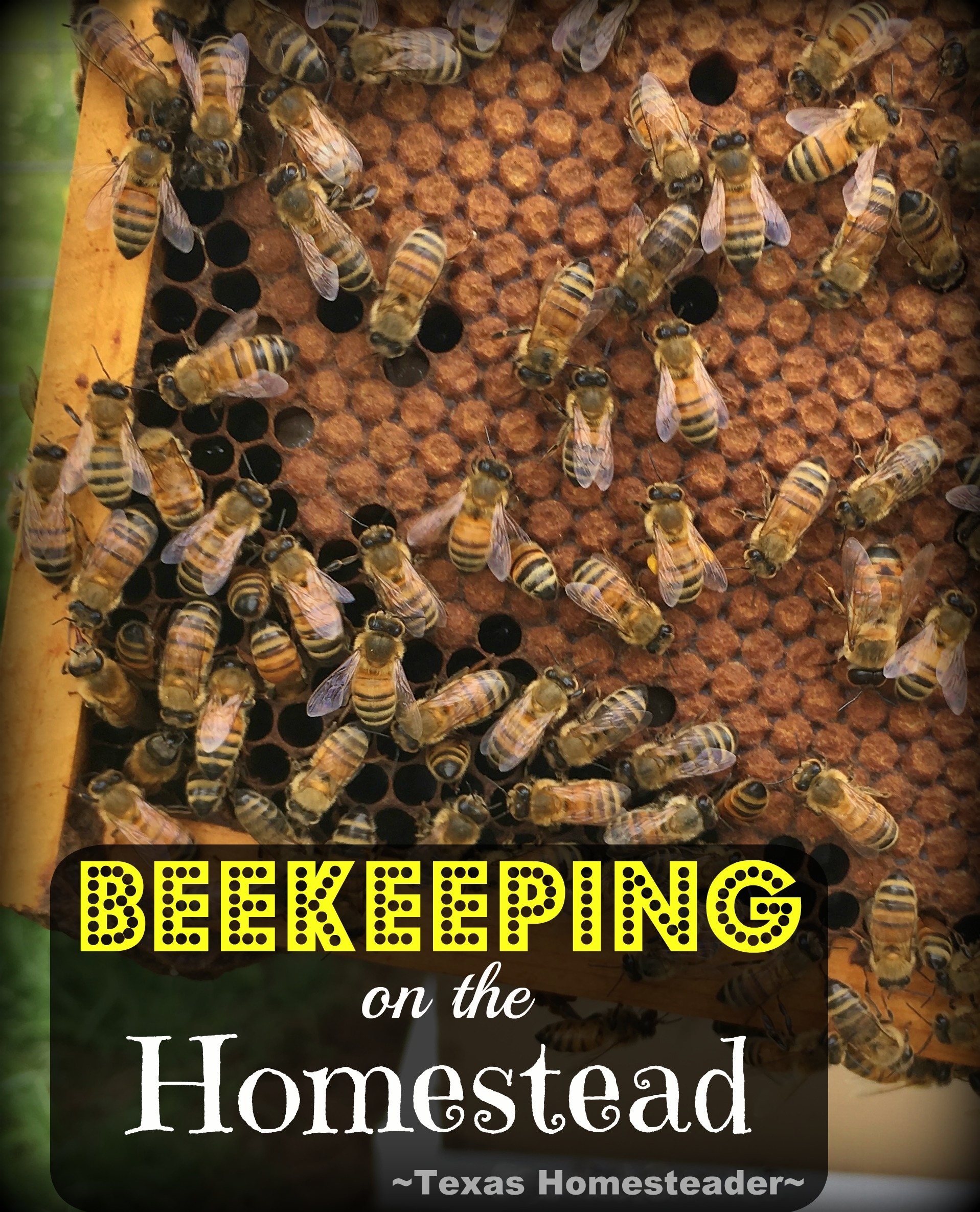

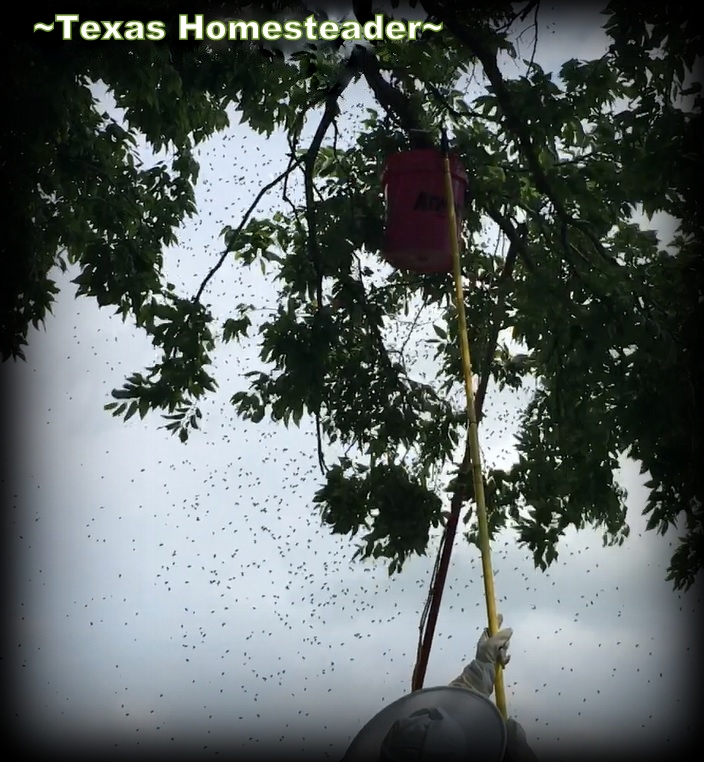
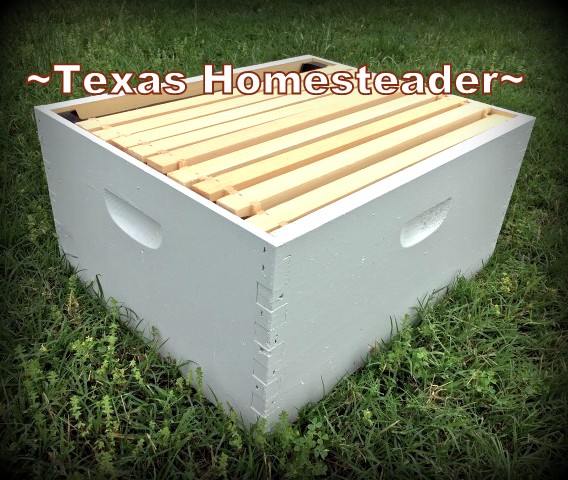
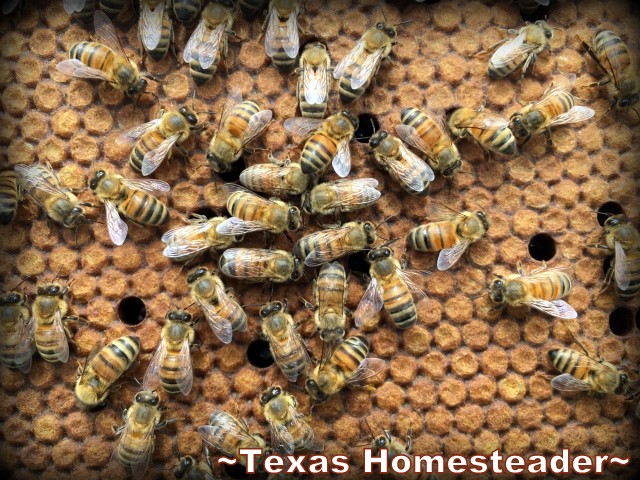
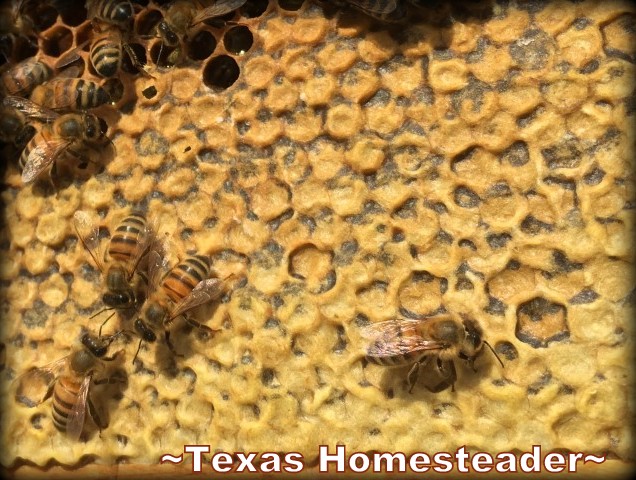
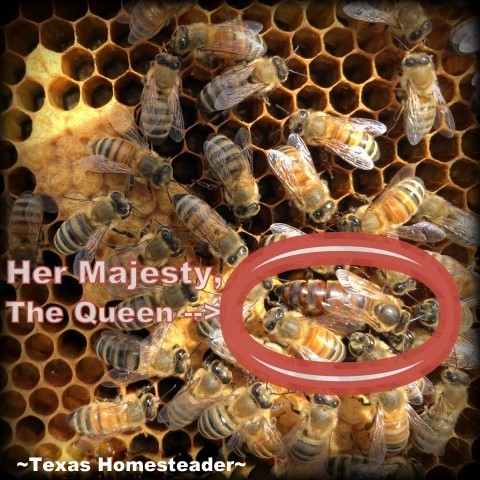
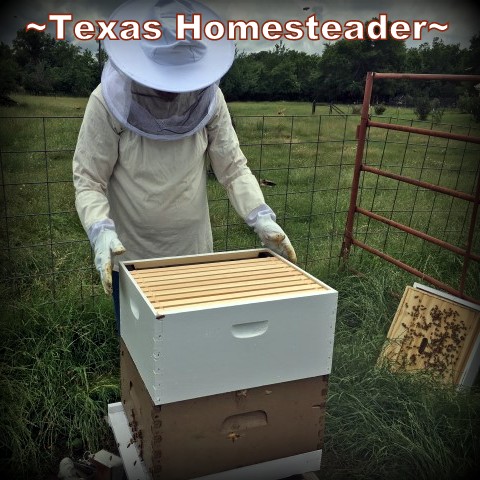


We have many clients who are into bee-keeping and friends who are either into homesteading or are considering making the leap. I’ve always found bee-keeping so fascinating even though I don’t think I’d take it on myself. Your blog is filled with wonderful information about homesteading and I have already shared the link with a few of my friends on facebook.
I didn’t think I’d take on beekeeping either Adrienne – I’ve always been afraid of bees. But I’ve learned so much with this, our first hives. It seems my fears were unfounded and I often accompany RancherMan to the hives so I can get these pictures waaaaaaay up close! I’m beyond excited anticipating our first honey harvest this year – yippee! ~
The wealth of honey certainly would make it worth it – plus bees are still endangered, are they not? Do you or Rancher Man ever get stung? I work for a pest control company and most of my experience with all types of bees is that people want them GONE, hives, nests, please just get them away from my house, they say. As much as I do fear them, I am and always have been in awe of what they can do.
There are some species of bees that are endangered Adrienne, but even with the species of bees that aren’t officially endangered, the plight of the honey bee has been been on the forefront of everyone’s mind for several years now. I used to be afraid of bees, assuming any time there was a bee around its only thought was to follow & sting me. (I’m almost embarrassed to admit that now. Nothing could be further from the truth!) RancherMan & I stand at the hives and watch them come & go, oftentimes right over our heads from their water source to their hives. Although when working the hives we do ALWAYS wear a veil, but gloves and other gear is optional – even handling the hives/frames/bees. Yep, I’m extremely embarrassed at my previous unrealistic fear of them. ~TxH~
Thanks for the great reply! I have been learning to appreciate bees more and more over the years and my life-long fear is nearly gone, especially now that I fully grasp how incredible they are.
I have never done this in my life but it is very interesting. And of course, this is the best honey out there with no preservatives. We have friends in the countryside that do this and we see lots of boxes for the bees. Good luck with your beekeeping. It looks fascinating. Sharing.
We are beginners also. There is so much to learn! I enjoyed your pictures.
🙂 gwingal
Enjoy reading the updates about your bees. You guys are just bizzy little bees with all you have going on.